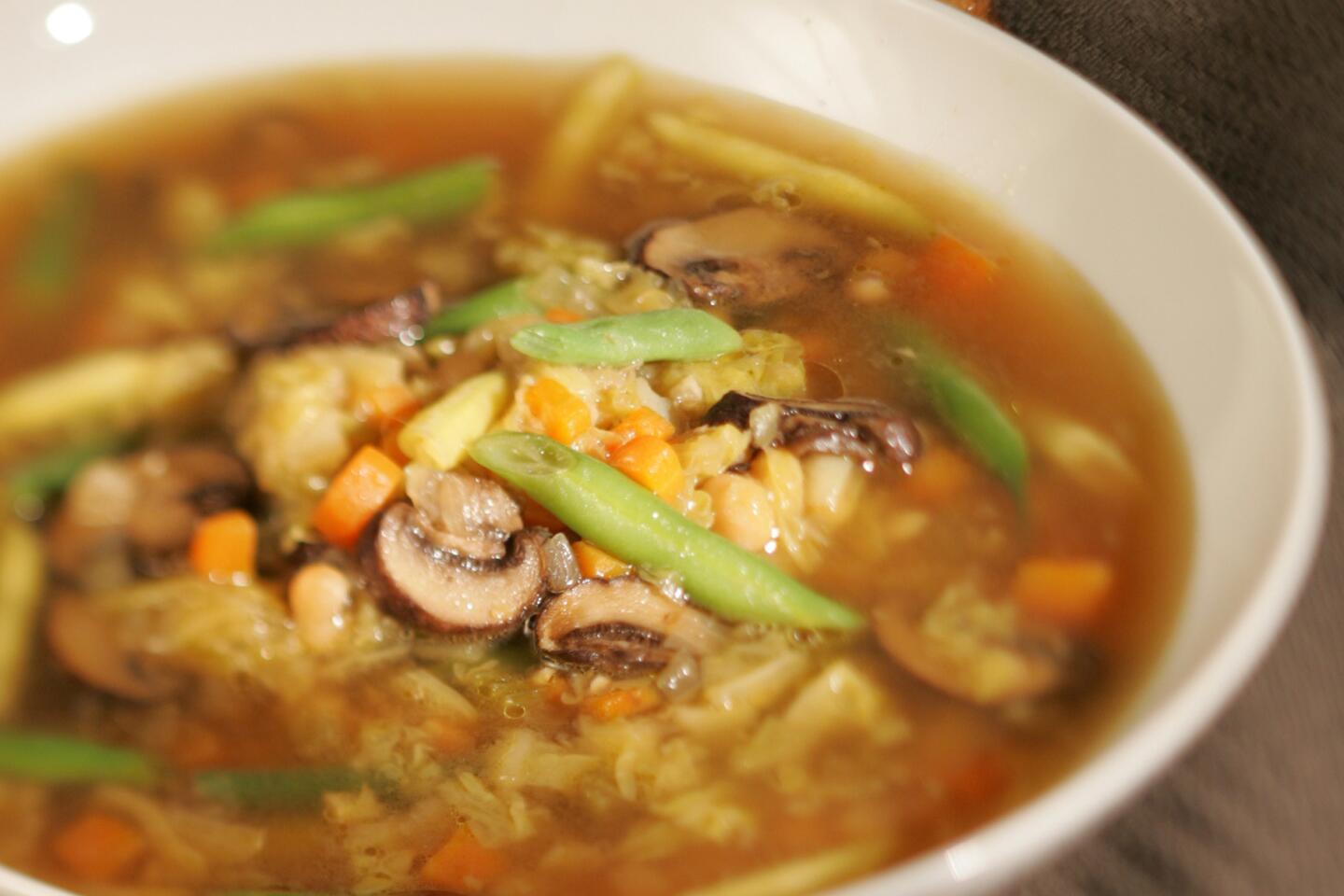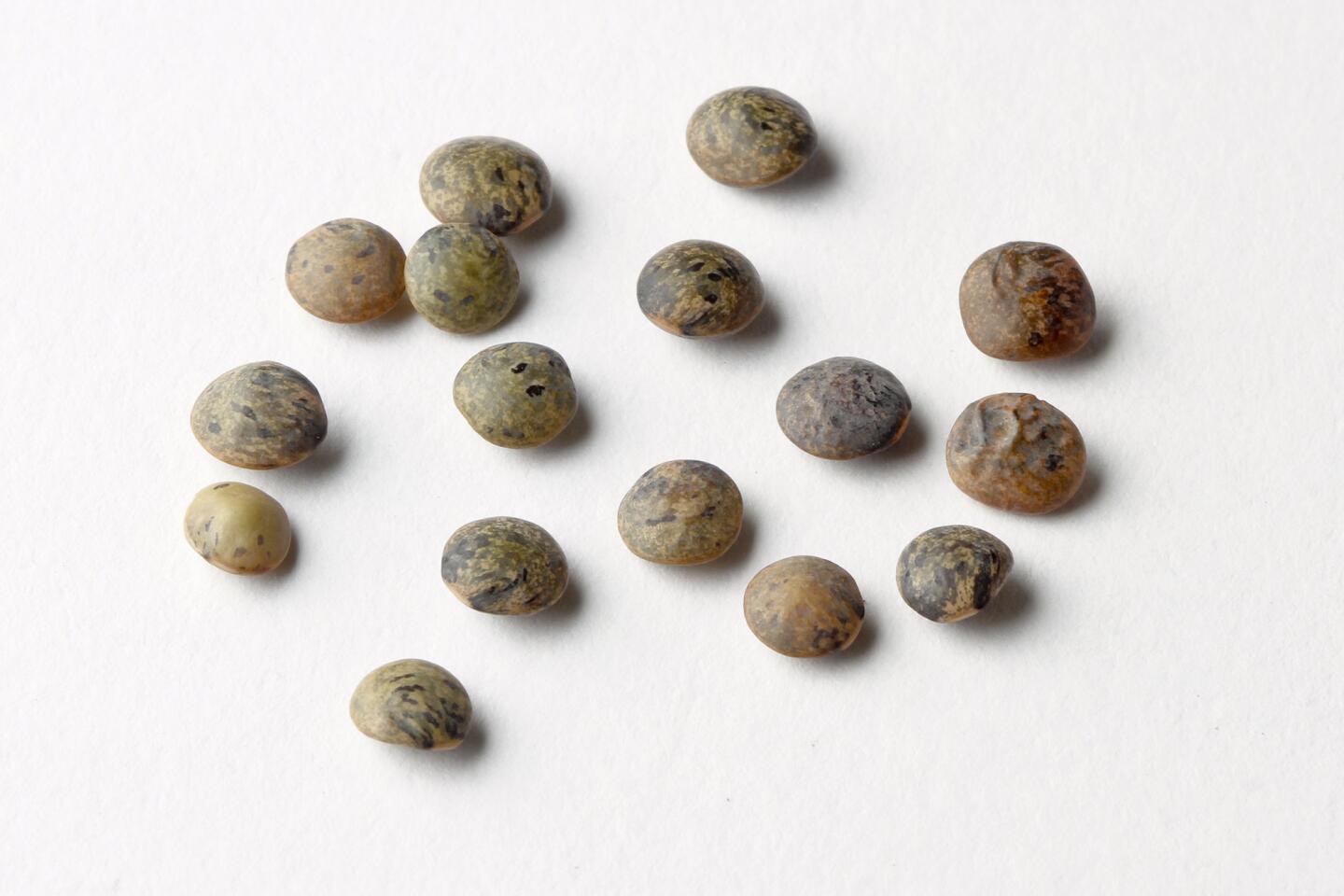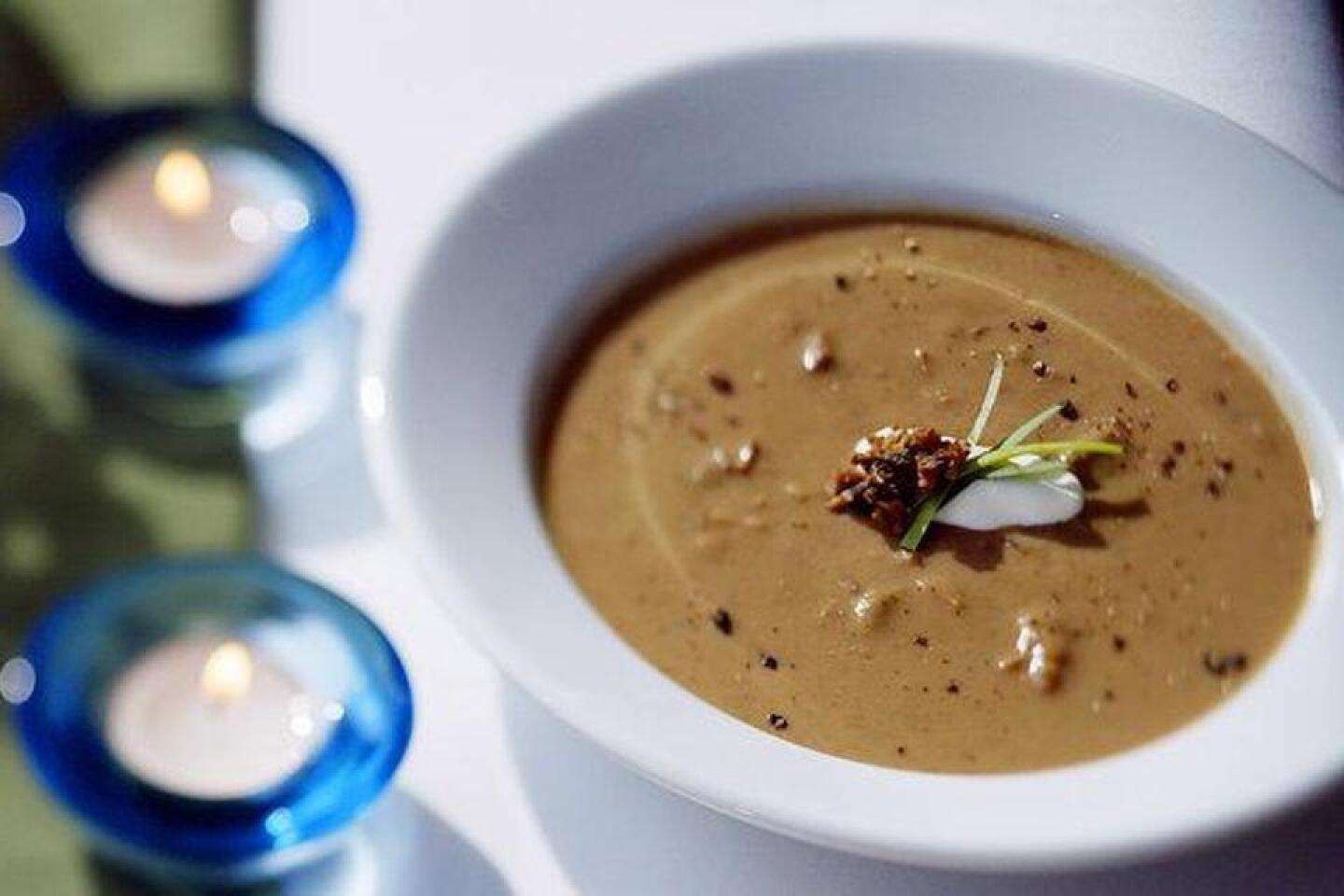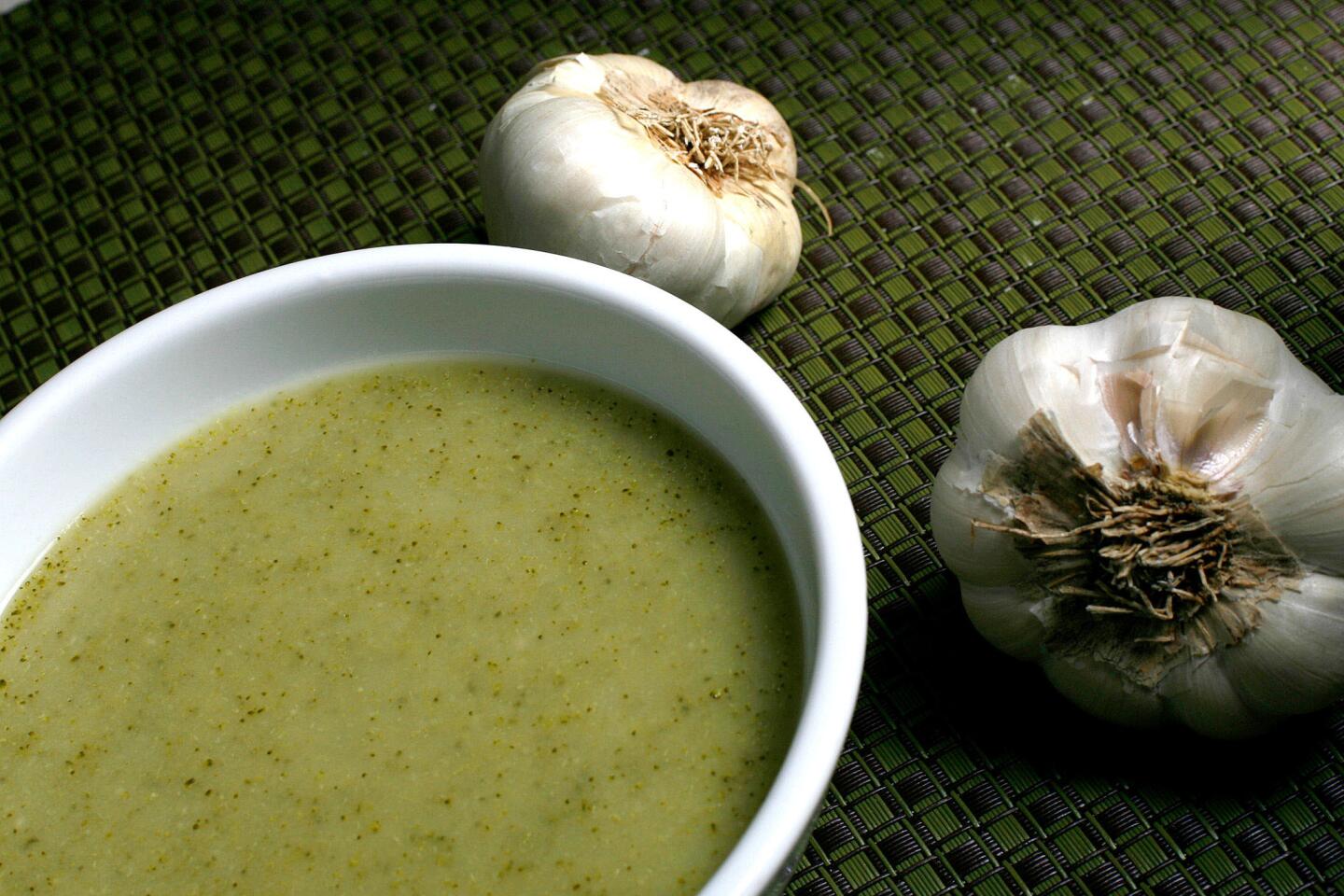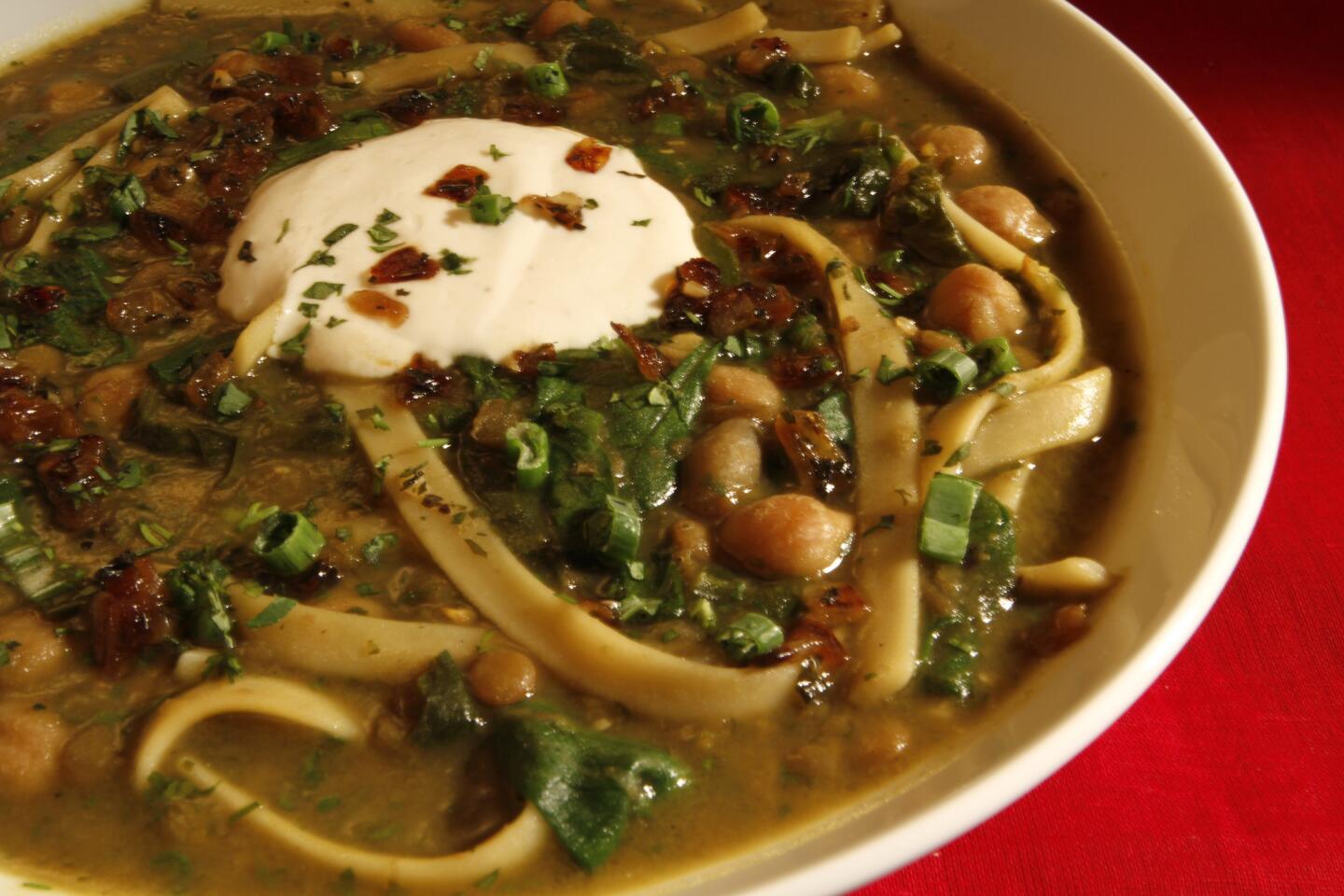How to build a vegetable soup -- with a dozen recipes to get you started
When it comes to vegetable soups in winter, more is definitely merrier. In summer, you can make a perfectly delicious soup by pureeing ripe tomatoes. But when you’re dealing with cold-weather vegetables, it takes a little more work -- and usually a lot more variety.
A perhaps unexpected upside of this long, slow cooking with so many different vegetables is that you rarely need to add a strong-flavored meat stock to build flavor. It’s easy to go vegetarian with these soups. In fact, in many cases you can just use water as the base for your soup, or at most a well-balanced vegetable stock.
Because so many winter vegetables are hardier than their warm-weather counterparts, slow-cooking is the key. Professionals like to talk about “sweating” vegetables. That’s not nearly as unpleasant as it sounds. It merely means cooking them extremely slowly, usually at least partially covered by a lid, so that they soften without browning. That gives you the sweet, pure, complex flavor of the vegetable itself without the masking effect of browning (not that browning is a bad thing necessarily!).
CALIFORNIA COOKBOOK: Find hundreds of delicious recipes
Though there are winter soups that are based on only one or two vegetables, you’ll find when you’re improvising at home that the results are likely to be more satisfying if you mix many. It’s not quite “dump out the crisper” time, but it’s not far from that.
Every vegetable adds its own character. Beans and grains give a satisfying earthy flavor. Winter squashes are so sweet they need to be used carefully, but because of their starch add wonderful body to a puree. Winter greens, such as kale, collards and mustards, add a slight spicy bitterness that offsets too much richness. Potatoes nearly disappear except for adding a velvety texture, either in chunks or pureed.
One final note on building vegetable soups -- they often need a finishing touch, even more than other soups. You’ll be surprised at what a thread of good green olive oil can add to a vegetable soup. Or, if you want to go in a different direction, a grating of Parmesan cheese.
To my taste, many vegetable soups also seem a little flat without the addition of some kind of acidity. If your soup doesn’t seem quite right even after correcting for salt, add a shot of vinegar or lemon juice. That will usually bring the flavors into focus.
ALSO:
RECIPES: 22 low-cal main courses
RECIPES: Five dishes that celebrate the bean
RECIPES: Chicken soups that will help cure any cold
More to Read
Eat your way across L.A.
Get our weekly Tasting Notes newsletter for reviews, news and more.
You may occasionally receive promotional content from the Los Angeles Times.
